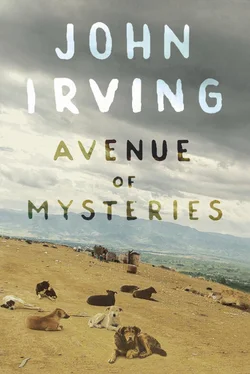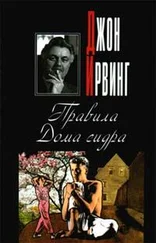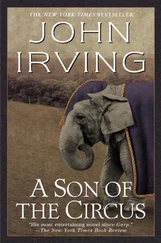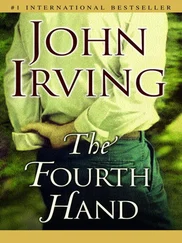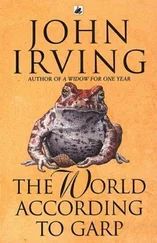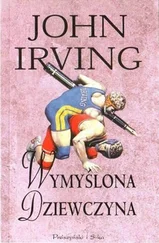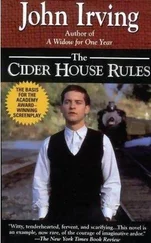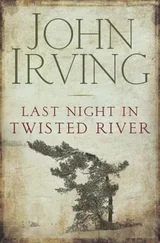Juan Diego had tried not to be drawn into taking sides.
Clark insisted that Juan Diego was “on the imagination’s side”; Juan Diego was a “fabler, not a memoirist,” Clark said.
Maybe so, Juan Diego thought, but he didn’t want to be on anyone’s side. Clark French had turned writing fiction into a polemical competition.
Juan Diego had tried to de -polemicize the conversation; he’d attempted to talk about the literature he loved, the writers who’d made him wish he could be a writer — not because he saw these writers as standard-bearers of a way to write, but simply because he loved what they’d written.
No surprise: the library of English-language literature at Lost Children was limited and generally not newer than the nineteenth-century models of the form, including the novels Father Alfonso and Father Octavio had designated for destruction in the hellfires of the basurero and those essential novels Brother Pepe or Edward Bonshaw had saved for the library’s small collection of fiction. These novels were what had inspired Juan Diego to be a novelist.
That life was not fair to dogs had prepared the dump reader for Hawthorne’s The Scarlet Letter. Those matronly churchwomen gossiping about what they would do to Hester — brand her forehead with a hot iron, or kill her, rather than merely mark her clothes — helped prepare Juan Diego for what vestiges of American Puritanism he would encounter after moving to Iowa.
Melville’s Moby-Dick —most notably, Queequeg’s “coffin life-buoy”—would teach Juan Diego that foreshadowing is the storytelling companion of fate.
As for fate, and how you can’t escape yours, there was Hardy’s The Mayor of Casterbridge. Michael Henchard, drunk, sells his wife and daughter to a sailor in the first chapter. Henchard can never atone for what he does; in his will, Henchard requests “that no man remember me.” (Not exactly a redemption story. Clark French hated Hardy.)
And then there was Dickens — Juan Diego would cite the “Tempest” chapter from David Copperfield. At the end of that chapter, Steerforth’s body washes ashore and Copperfield is confronted with the remains of his former childhood idol and sly tormentor — the quintessential older boy you meet at school, your predestined abuser. Nothing more was necessary to say about Steerforth’s body on the beach, where he lies “among the ruins of the home he had wronged.” But Dickens, being Dickens, gives Copperfield more to say: “I saw him lying with his head upon his arm, as I had often seen him lie at school.”
“What more did I need to know about writing novels than what I learned from those four?” Juan Diego had asked his writing students — Clark French included.
And when Juan Diego presented those four nineteenth-century novelists to his writing students—“my teachers, ” he called Hawthorne, Melville, Hardy, and Dickens — he never failed to mention Shakespeare, too. Señor Eduardo had shown Juan Diego that long before anyone wrote a novel, Shakespeare understood and appreciated the importance of plot.
Shakespeare was a mistake to mention around Clark French; Clark was the Bard of Avon’s self-appointed bodyguard. Coming, as Clark did, from the only-imagine school of thought — well, you can imagine how Clark had a bug up his ass about those infidels who believed someone else wrote Shakespeare.
And any thoughts of Shakespeare brought Juan Diego back to Edward Bonshaw and what had happened to him and Flor.
• • •
AT THE BEGINNING, WHEN Señor Eduardo and Flor were still strong enough — when they could carry things and deal with stairs, and Flor was still driving — they made their own way to the first-floor clinic in the Boyd Tower building; it was only a third of a mile from their house on Melrose. When everything became more difficult, Juan Diego (or Mrs. Dodge) would take Flor and Edward Bonshaw across Melrose Avenue; Flor was still walking, but Señor Eduardo was in a wheelchair.
In the early to mid-1990s — before the number of deaths from AIDS plummeted (due to the new meds) and the number of HIV-positive patients in the Virology Clinic began to increase — the number of patients visiting the clinic stabilized, at about two hundred a year. Many of the patients sat in their partners’ laps in the waiting room; there was the occasional conversation about gay bars and drag shows, and there were a few flamboyant dressers — flamboyant for Iowa.
Not Flor — not anymore. Flor would lose most of her womanly appearance, and though she continued to dress as a woman, she dressed modestly; she was aware that her allure had dimmed, if not in Señor Eduardo’s adoring eyes. They held hands in the waiting room. In Iowa City, at least in Juan Diego’s memory, the only place Flor and Edward Bonshaw were publicly demonstrative of their affection for each other was in the waiting room of the HIV/AIDS clinic in the Boyd Tower building.
One of the AIDS patients was a young man from a Mennonite family who’d originally disowned him; they would later reclaim him. He brought vegetables from his garden to the waiting room; he handed out tomatoes to the clinic staff. The young Mennonite wore cowboy boots and a pink cowboy hat.
One of the times when Mrs. Dodge took Flor and Edward Bonshaw to the clinic, Flor said something funny to the young gardener in the pink cowboy hat.
Flor always wore her bandanna in public. La Bandida said: “You know what, cowboy? If you’ve got a couple of horses, you and I could rob a train or stick up a bank.”
Mrs. Dodge told Juan Diego that “the whole waiting room laughed”—even she laughed, she said. And the Mennonite in the pink cowboy hat went right along with the joke.
“I know North Liberty pretty well,” the cowboy said. “There’s a library that sure would be easy to knock off. You know North Liberty?” the cowboy asked Flor.
“No, I don’t,” Flor told him, “and I’m not interested in sticking up a library — I don’t read.”
This was true: Flor didn’t read. Her spoken vocabulary was very sharp — she was an excellent listener — but her Mexican accent hadn’t changed since 1970, and she never read anything. (Edward Bonshaw or Juan Diego would read aloud to her.)
It had been a comic interlude in the HIV/AIDS clinic, according to Mrs. Dodge, but Señor Eduardo was upset by Flor’s flirting with the cowboy gardener.
“I wasn’t flirting — I was making a joke,” Flor said.
Mrs. Dodge didn’t think that Flor had been flirting with the farmer. Later, when Juan Diego asked her about the episode, Mrs. Dodge said: “I think Flor is done with flirting.”
Mrs. Dodge was from Coralville. Dr. Rosemary had recommended her. The first time Edward Bonshaw said to the nurse, “In case you were wondering about my scar—” well, Mrs. Dodge knew all about it.
“Everyone in Coralville — that is, everyone of a certain age — knows that story,” Mrs. Dodge told Señor Eduardo. “The Bonshaw family was famous, because of what your father did to that poor dog.”
Señor Eduardo was relieved to hear that the Bonshaw family had not escaped scrutiny in Coralville — you can’t get away with shooting your dog in the driveway. “Of course,” Mrs. Dodge went on, “I was still a young girl when I heard the story, and it wasn’t about you or your scar,” she told Señor Eduardo. “The story was about Beatrice. ”
“That’s entirely as it should be — she was the one who got shot. The story is about Beatrice,” Edward Bonshaw declared.
“Not to me — not to anyone who loves you, Eduardo,” Flor said to him.
“You were flirting with that farmer in the pink cowboy hat!” Señor Eduardo had exclaimed.
Читать дальше
